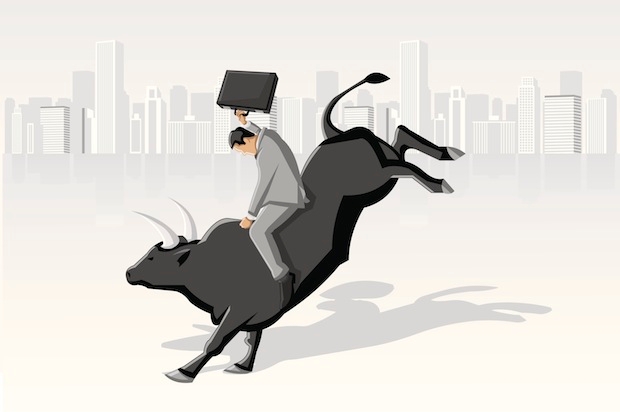There were no fireworks, and not much champagne. Indeed, it wasn’t an anniversary that many people noticed. But on 9 March, the bull market in equities was five years old. It was on that day back in 2009 that the Dow Jones Industrial Average, the key global benchmark for stocks, edged down another 80 points to close at 6,547, its lowest level since 1997. Although no one knew at the time, that was the bottom, and it was to go no lower. From then onwards, the recovery was under way.
In London, our own low point came three days earlier, on 6 March 2009, when the FTSE100 index touched 3,530. There is an old saying among traders that ‘nobody rings a bell at the bottom of the market’. If they did, however, and you’d been lucky enough to hear it chime, you would have done very well. The Dow has since climbed all the way back to 16,000. The FTSE100 is bouncing around the 6,500 mark, and at the close of last year was getting close to 7,000. You would have doubled or almost tripled your money simply by putting it into blue-chip companies in two of the most developed markets in the world.
The trouble is, five years is a heck of a long run for a bull market. Take the Dow, for example. In the past century, the index has only chalked up five other rallies that lasted that long, and two of those rather worryingly came to a sorry end within a few days of the fifth anniversary. If it can just hang in there until April, this will be the fourth longest rally in history.
That is already taking it into elite company.








Comments
Join the debate for just £1 a month
Be part of the conversation with other Spectator readers by getting your first three months for £3.
UNLOCK ACCESS Just £1 a monthAlready a subscriber? Log in